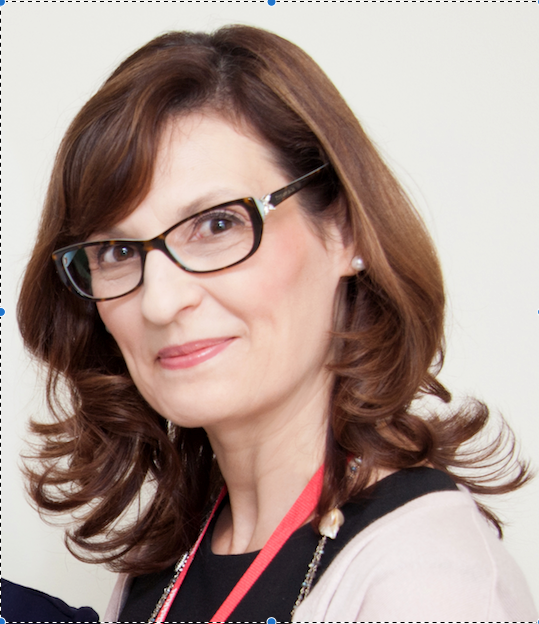- Case-Based Roundtable
- General Dermatology
- Eczema
- Chronic Hand Eczema
- Alopecia
- Aesthetics
- Vitiligo
- COVID-19
- Actinic Keratosis
- Precision Medicine and Biologics
- Rare Disease
- Wound Care
- Rosacea
- Psoriasis
- Psoriatic Arthritis
- Atopic Dermatitis
- Melasma
- NP and PA
- Skin Cancer
- Hidradenitis Suppurativa
- Drug Watch
- Pigmentary Disorders
- Acne
- Pediatric Dermatology
- Practice Management
- Prurigo Nodularis
- Buy-and-Bill
Article
EB’s great hope
Author(s):
Pediatricians respond to the first successful gene therapy treatment for epidermolysis bullosa.
In November 2017, Nature published the case of a seven-year-old boy with junctional epidermolysis bullosa. He was near death and had lost about 80% of his epidermis because of a double bacterial infection.
Two years after receiving an experimental regenerative treatment with autologous transgenic keratinocyte cultures to replace the damaged skin, the child was back at school playing soccer. His skin appeared normal.

Dr. PriceThe study’s senior author Michele De Luca, M.D., a regenerative medicine specialist at the University of Modena and Reggio Emilia, Modena, Italy, had performed two proof-of-principle transgenic cell therapies on small skin patches for junctional epidermolysis bullosa patients before tackling this transgenic replacement on most of the boy’s body. The successful trial represents a milestone for patients with the severe and often lethal genetic disease.
“This is the best news we’ve had for the epidermolysis bullosa community in a long, long time,” says Harper Price, M.D., a pediatric dermatologist at Phoenix Children’s Hospital, Phoenix, who treats children with epidermolysis bullosa.

Dr. Pope
“I compare this to the excitement that was generated when it was announced that children were undergoing stem cell transplants for epidermolysis bullosa. I would say this is much greater and exciting news in the fact that it’s genetic. It’s targeted therapy towards specific mutations in epidermolysis bullosa,” said Dr. Price who was not affiliated with the study.
Elena Pope, M.D., professor of pediatrics at the University of Toronto and head of pediatric dermatology at The Hospital for Sick Children in Toronto, says the work is extremely important. It provides proof-of-concept that replacing the entire skin using epidermal stem cells is a feasible option for patients with severe types of epidermolysis bullosa, including the junctional type.
How it happened
German doctors contacted Dr. De Luca in 2015 about the young Syrian epidermolysis bullosa patient, who had become dangerously ill. His parents consented to the experimental procedure and authorities granted the request for treatment on compassionate grounds.
Researchers biopsied an area of the boy’s still intact epidermis and extracted keratinocytes, expanding those in culture; then, transducing a “retroviral vector carrying the full-length, healthy version of the laminin b3 coding sequence,” according to an article in The Scientist.
The cells grow as sheets, which when further expanded, could blanket the child’s body.
Two operations, performed in October and November 2015, were needed to transplant the cells. A smaller third operation in January 2016 filled the gaps.
In the post-operative weeks, the transplanted cells began closing the boy’s wounds. And months after surgery, biopsies showed normal, healthy skin.
The treatment sounds relatively painless, but according to Dr. Price, even a small biopsy in an epidermolysis bullosa patient can be significantly painful and not heal for months. And to transfer the cell sheets to large body areas, doctors have to have the patient’s skin cleaned and debrided.
“Working on epidermolysis bullosa skin is like butterfly wings. But compared to other treatments like a stem cell transplant, I think it’s much less of a risk because we’re not affecting their immune system,” she said.
Skin rejuvenation revealed
The study showed a type of stem cell, called holoclone, to have the highest ability to self-regenerate. This a tremendous discovery that has application to other studies involving genetic modifications, Dr. Price.
“The patient has been described as not developing skin cancer, tumors or other related events. It seems like they think there is this sustainable holoclone that remains relatively constant as these cells turn over every month, and that’s how they produced the graft,” she says. “We are going to learn a lot more about keratinocytes and turnover of the skin and these stem cells based on this type of therapy.”
Similar work in the U.S.

Dr. TangU.S. researchers, including at Stanford University, are conducting similar trials for epidermolysis bullosa.
“We have treated seven adult patients with epidermolysis bullosa, the recessive dystrophic kind,” says Jean Y. Tang, M.D., Ph.D., a dermatologist at Stanford University School of Medicine.
“We take the skin biopsy, grow it in the lab, and then we use a virus to insert in the wild-type defective collagen VII gene. Then, we grow gene therapy or gene-corrected skin grafts and take the patients to the operating room,” she said.
She has treated six wounds on seven patients with the gene therapy grafts.
“The good news is the gene therapy grafts heal the chronic wounds - though, not forever but for about six to 12 months. We consider this a treatment to heal the chronic wounds that otherwise wouldn’t heal in these recessive dystrophic epidermolysis bullosa patients,” Dr. Tang says.
Another difference in the research being done at Stanford is that the researchers there are not aiming to replace the entire skin.
Dr. Tang and colleagues reported results of their work in the Journal of the American Medical Association in November 2016.
“We are getting ready to start a phase three clinical trial, now treating children and adults with recessive dystrophic epidermolysis bullosa,” she says. “Hopefully, after this phase three clinical trial, the FDA will evaluate our results and determine whether this could be a new drug for wounds of patients with recessive dystrophic epidermolysis bullosa.”
Dr. Tang says the research going on worldwide to restore epidermolysis bullosa patients’ damaged skin is a beautiful example of understanding the basic biology.
“It’s understanding that the gene defect in these patients makes them unable to make collagen VII, which allows the epidermis and dermis to stick together. That’s why they have fragile skin,” Dr. Tang says. “And when you take a biopsy of the patient’s own cells, and now put in the wild-type gene, you get functional, normal skin. It’s one of the first examples of gene therapy being applied to patients, and a beautiful example of really personalized medicine.”
A cure?
While it is a great step forward, it’s a disease-modifying procedure - not a cure, according to Dr. Pope.
“The limitation of this technique is that it does not deal with internal manifestations of the disease that are equally, if not more, life altering. In addition, it is too early to know how long lasting the effects on the skin will be. It is very impressive work and I think this is where medicine in general is going-the genetic pathways targeting what is wrong with the skin and trying to fix that in some way,” she said.
What dermatologists can do now for patients
Now is the time to start talking with patients who have severe epidermolysis bullosa about gene therapy research.
“If you have patients you think would be good candidates, refer them early and get them in touch with these investigators,” Dr. Price says.
Dermatologists who care for these patients should consider participating in the epidermolysis bullosa patient registry of the Epidermolysis Bullosa Clinical Research Consortium (EBCRC).
Disclosures: Dr. Price is a principal investigator for Castle Creek and Scioderm, which have ongoing therapeutic trials for epidermolysis bullosa not associated with this featured technology.
References
1. Hirsch T, Rothoeft T, Teig N, et al. “Regeneration of the entire human epidermis using transgenic stem cells,” Nature. November 2017. DOI:10.1038/nature24487.
2. Siprashvili Z, Nguyen NT, Gorell ES, et al. “Safety and Wound Outcomes Following Genetically Corrected Autologous Epidermal Grafts in Patients With Recessive Dystrophic Epidermolysis Bullosa,” JAMA. Nov. 1, 2016. DOI:10.1001/jama.2016.15588.






